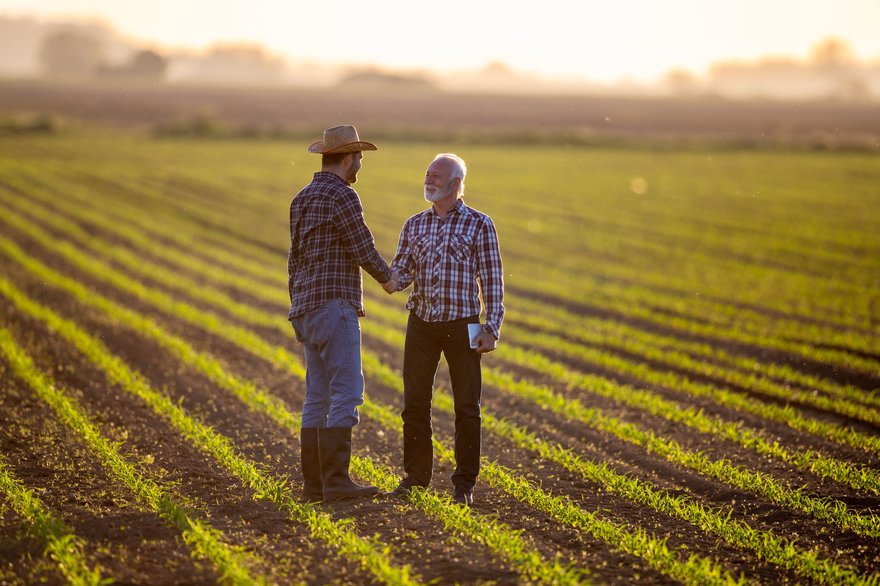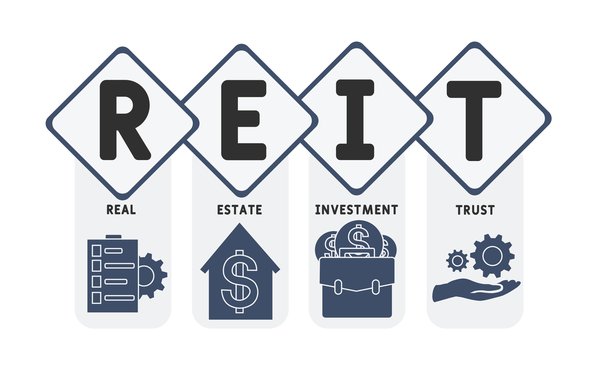Real estate investment trusts (REITs) provide investors with an easy way to invest in farmland. Historically, the sector has produced attractive long-term total returns boosted by steadily appreciating land values and crop-driven rental income. Farmland has also traditionally been an excellent inflation hedge and isn't as volatile as other asset classes. These characteristics make farmland a superb way for investors to diversify their portfolios.

Here's a closer look at how to invest in farmland REITs. We'll dig deeper into how they make money, their advantages and risk factors, and consider a couple of farmland REIT investment options.
Understanding farmland REITs
Understanding farmland REITs
Farmland-focused REITs typically serve two purposes:
- They provide capital to farmers: Farmland REITs commonly complete sales-leaseback transactions with farmers by acquiring land and other agricultural real estate and then leasing it back to the farmer under a long-term lease. The transactions can unlock the value of the farmer's land while giving them the capital to expand their farms.
- They provide investors with access to farmland: Historically, only farmers or wealthy individuals could invest in farmland due to the high cost and operational expertise required. However, REITs enable anyone to invest in farmland.
Real estate investments by farmland REITs can include:
- Farmland supporting annual row crops, permanent crops, and commodity crops.
- Water rights.
- Properties related to farming such as cooling facilities, processing buildings, packaging facilities, and distribution centers.
- Loans made to farmers secured by farm real estate.
Farmland REITs typically sign long-term triple net leases (NNN) with farmers. This lease structure provides the REIT with very stable cash flow that tends to rise each year either at a fixed rate or via an inflation-linked escalation clause. In addition, farmland REITs earn a percentage of a farm's gross revenue through participation leases on some farms. Participation income can vary from year to year, depending on crop prices.
Farmland REITs will also own and operate some farms directly, entitling them to all the crop income. They can also lease some of the farm's land for other purposes.
Advantages
Advantages of investing in farmland REITs
Farmland provides investors with three crucial advantages:
- Portfolio diversification: Farmland offers investors uncorrelated returns compared to other major asset classes such as stocks, bonds, and cryptocurrencies. That makes it an excellent way to diversify a portfolio and help reduce its overall volatility.
- Inflation hedge: Farmland has generally offered a better hedge against inflation than stocks, bonds, and gold. Historically, there has been about a 70% correlation between the value of U.S. farmland and the consumer price index. Farmland investments with participation rents tend to benefit from inflation because rising food prices should enable the farm to sell their crops for a higher price.
- Attractive total returns: Farmland provides investors with two sources of returns -- rental income and capital appreciation. The two sources delivered a combined average annual return of 11% from 1992 to 2021.
Risks
Risks of investing in farmland REITs
While farmland has been an excellent long-term investment, it isn't without risk. Farmland REITs face interest rate risk, which is common to all REITs. Rising interest rates make it more expensive for REITs to borrow money. That can be an issue if they have a large upcoming debt maturity or floating rate debt. It can also affect their ability to make acquisitions.
Meanwhile, REIT valuations tend to fall during periods of rising interest rates. Higher interest rates provide yield-focused investors with more attractive lower-risk options such as bonds or bank CDs. REIT dividend yields need to rise to compensate investors for their higher risk profiles.
In addition, farmland REITs face some specific risk factors:
- Natural disasters: Droughts, wildfires, insect infestations, and other natural disasters can affect a farm's harvest and ability to pay rent.
- Crop prices: Crop prices can be very volatile, especially for annual commodity crops such as corn, soybeans, and wheat, which can affect farm income.
- Farmer-tenants: Although farmland has overall been an excellent investment, farming has been a much more challenging business due to natural disasters, crop prices, equipment costs, labor costs, debt, and other issues. If farmers run into financial trouble, they might not be able to make their rental payments.
2 farmland REITs to consider in 2024
| Farmland REIT | Ticker Symbol | Market Cap | Description |
|---|---|---|---|
| Gladstone Land | (NASDAQ:LAND) | $486.3 million | A REIT that owns farms producing fresh produce and permanent row crops. |
| Farmland Partners | (NYSE:FPI) | $524.8 million | A REIT that owns high-quality farmland and makes loans to farmers secured by farm real estate. |
1. Gladstone Land
Gladstone Land owned 164 farms with 113,000 acres in 15 states at the end of the first quarter of 2022. This farmland REIT also owned 45,000 acre-feet of banked water in California. Overall, the REIT owned $1.5 billion of farmland.
The company primarily owns farms in regions where its tenants can grow fresh produce row crops such as berries and vegetables that are planted and harvested annually. It also owns farms that produce permanent crops such as almonds, apples, cherries, figs, lemons, olives, pistachios, blueberries, and wine grapes. Permanent crops typically get planted every 10 to 20 years and are harvested annually. The REIT leases the land to farmers under long-term NNN leases.
Gladstone Land focuses on fresh produce farms because they're less risky than commodity crops. They tend to have better water access, are better insulated from crop price volatility, are less dependent on government subsidies and tariffs for protection, have lower storage costs, and have higher rental rates.
The REIT's focus on fresh produce has paid off for investors. Gladstone has made monthly dividend payments consistently since its initial public offering (IPO) in 2013. This REIT has increased its dividend payment 26 times over the past 29 quarters, driven by higher lease revenue and its ability to acquire new farms. Gladstone targets its dividend growth to exceed inflation.
2. Farmland Partners
Farmland Partners owned or managed 185,700 acres of farmland in 19 states at the end of the first quarter of 2022. More than 100 tenants produced 26 crop types at its leased farms.
Roughly 70% of this REIT's portfolio by value were farms growing commodity crops such as corn, soybeans, wheat, rice, and cotton. The other 30% included farms growing specialty crops such as citrus and other fruit trees. Farmland Partners receives fixed rental payments and variable payments. Its focus on commodity crops provides investors with exposure to increasing global food demand.
In addition to owning farmland, this REIT provides auction, brokerage, third-party farm management, and third-party asset management services. Additionally, it generates income from solar and wind energy, plus recreational rents, crop sales, and crop insurance from farms it operates. During the first quarter of 2022, 81% of its income came from fixed payments (rents, management fees, tenant reimbursements, and interest income). The rest came from variable participation rents (5%), direct operating profit (10%), and other income (6%).
Farmland Partners acquires farms based on their agricultural value and uses alone. However, some farms have other uses such as real estate development or renewable energy. The company has started working with renewable energy developers to turn some land into solar or wind farms, and it now has solar projects at five farms. Because solar displaces a large amount of agricultural land, the properties no longer earn farm rent, but they generate three times more revenue than farm leases. Meanwhile, its farms supported nine wind projects that generated additional income since wind turbines displace only a small amount of agricultural land.
Related investing topics
Farmland REITs can help diversify your portfolio
Farmland REITs enable anyone to harvest the benefits of investing in farmland. Historically, the sector has been an excellent investment by delivering attractive total returns from rental income and value appreciation. On top of that, farmland is an excellent inflation hedge and uncorrelated to the markets. These features make it an ideal complement to a diversified portfolio.



































